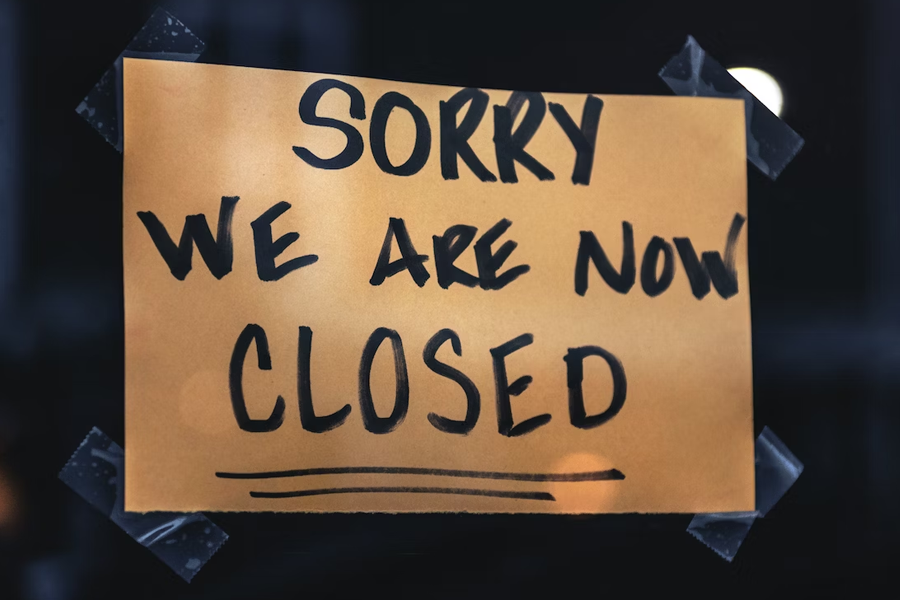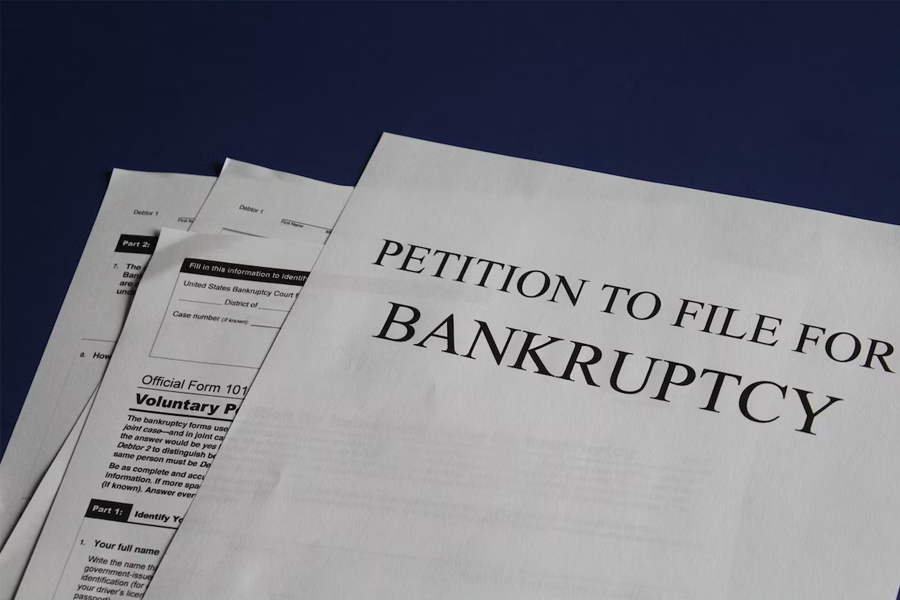As a business owner, you might think of liquidation as a bad thing. It brings to mind dramatic scenes of bankruptcy and financial stress.
But contrary to first expectations, the liquidation process isn’t just about your doom – it’s a viable tool for managing inventory, reducing risk, and optimizing your operations.
In this article, we will explain in detail what liquidation is, so you can learn about this financial process and understand how your business can use it.

When Liquidation Occurs
In finance, liquidation is the process of converting a business’s assets into cash or cash equivalents. It’s a strategic move often done when a company needs to settle debts quickly, is in financial distress, or shuts down operations. But it’s not just for a business closing down operations – it’s also utilized proactively by business-savvy companies.
Liquidation happens in various scenarios, such as the following:
- Bankruptcy filing: When a business can’t meet its financial obligations, it may opt for bankruptcy, leading to liquidation to repay creditors.
- Business closure: If an e-commerce venture decides to cease operations, liquidation helps efficiently narrow down and distribute the business’ assets.
- Debt Settlement: Companies facing overwhelming debt may choose liquidation to gather funds for debt settlement.
- Excess inventory: If you have extra or slow-moving inventory tying you up, a targeted inventory liquidation strategy helps you quickly sell these items and free up space, resources, and capital.
- Financial restructuring: In times of financial restructuring or business focus change, a liquidation sale can be part of a broader strategy to reshape the company’s product offerings and optimize resource use.
Understanding the importance of the liquidation process is critical for e-commerce business owners. It’s a reliable approach to significant financial challenges and an opportunity for businesses to handle setbacks without ruining their reputation.
Also, knowing the ins and outs of liquidation gives you another tool in your business toolkit.
The liquidation process is not just about your business closing down; it can also be used to manage inventory, improve cash flow, and mitigate risk. More on that below.
Voluntary and Involuntary Liquidation
As a business, you’re going to encounter different types of liquidation. Understanding them gives you a good perspective of the financial strategies available in case you need them.
Voluntary Liquidation
In this type of liquidation, a company’s shareholders or decision markets collectively decide to liquidate inventory or cease operations. This deliberate approach allows for a more controlled and organized process.
Examples of voluntary liquidation scenarios include the following:
- Strategic exit: The business decides to exit the market strategically to reallocate resources or pursue new ventures.
- Succession planning: Owners might opt for voluntary liquidation as part of a planned succession strategy.
Compared to involuntary liquidation, where you need to liquidate only to pay creditors, voluntary liquidation can be a valuable tool outside of business closure. In some situations, you will need to generate enough cash even if you’re not closing quickly. An orderly and strategic liquidation proceeding can be part of that solution.

Involuntary Liquidation
Also called forced liquidation or compulsory liquidation, it happens due to external factors imposed on the company and beyond its control.
Examples of involuntary liquidation scenarios include:
- Creditor petition: This is when entities initiate legal action to recover outstanding debts, compelling the company to liquidate assets to pay creditors.
- Bankruptcy proceedings: The company may face involuntary liquidation as a consequence of bankruptcy proceedings.
Involuntary liquidation is not always a bad thing. Admittedly, it often has several negative and significant consequences for the company. For example, they can harm your company’s reputation, cause sudden and unplanned job loss, and even harm stakeholder standing.
Stages and Steps in the Liquidation Process
What happens in the liquidation process? As a business owner, learning at least an overview of the proceedings ensures you make informed decisions should a liquidation be necessary. You never know your business’s challenges.
In the Philippines, the liquidation process of a company involves several key steps and requirements.
This is an overview of the stages and steps involved:
- Initiation of voluntary or involuntary liquidation: In the Philippines, a Filipino company can undergo voluntary or involuntary liquidation, which the creditors initiate.
- Appointment of a liquidator: Typically, the court will select a qualified professional to oversee the liquidation and ensure legal compliance.
- Notification and communication: At this stage, the company informs the stakeholders about the impending liquidation. This process addresses stakeholder concerns and maintains transparent communication.
- Asset valuation and sale: The company’s assets will then be assessed to determine their sale value. Once the value is determined, the company will strategically sell assets to maximize returns.
- Debt settlement: When a company liquidates because of outstanding debt (involuntary liquidation), the business must pay back the people it has money to. At this stage, they will ensure fair distribution of funds among secured creditors and unsecured creditors.
- Legal closure: At this stage, the business must complete all necessary legal procedures and obtain formal approval for liquidation.
- Distribution of remaining funds: The company will equally distribute any residual funds among stakeholders.
This is a generalized process – the steps can be pretty complicated, depending on the complexity of your business and the severity of the claims against you. Thus, seeking legal or expert counsel is always advised when facing a liquidation process, especially for new businesses.
Key Concepts in the Liquidation Process
In this section, let’s examine important need-to-knows of liquidation as a financial process and business strategy.
Below, you will find more information about the difference between liquidation and bankruptcy, how you can understand the financial implications and how you can sell assets for cash. Let’s move on.

Liquidation vs. Bankruptcy
According to the bankruptcy code of the Philippines, bankruptcy is a legal status where an entity (individual or business) can’t repay its debts anymore.
When a business goes bankrupt, it can’t continue operations and must close up shop and settle its obligations. There are several ways businesses can settle their debts to credit card companies, stakeholders, and other creditors – liquidation of their assets being one of them.
On the other hand, liquidation is the orderly process of selling or winding down a business by converting its assets into cash. This is usually done to settle debts and strategically address financial or inventory challenges. In other words, a business can conduct a liquidation process whether or not they are bankrupt.
Liquidation Sales and Auctions: Selling Assets for Cash
Understanding the different ways to liquidate your assets can help maximize returns and ensure a smooth process when the time comes.
There are several ways you can go about a liquidation process, such as the following:
- Liquidation sales: You can host clearance sales to sell off inventory quickly. You can even offer discounts to attract customers and sell your goods faster.
- Bulk sales: If you can secure a single buyer for your assets, you can negotiate for them to take most of them. Depending on your terms, you can even negotiate for retail value in exchange for other things the buyer might want.
- Third-party liquidators: Your company can also hire professionals for a more efficient and organized approach.
Learning the different liquidation approaches equips you with the flexibility to adapt your strategy for whatever comes. Your company’s liquidation will likely have unique circumstances, so you must optimize outcomes as much as possible.
Liquidation Expenses and Costs
While you’re going through liquidation to turn remaining assets into cash, the process itself isn’t free. There are many different costs to consider, often adding to what you might get from the entire thing. Knowing potential expenses and costs is important for those considering liquidation for their business circumstances.
Different expenses are involved when liquidating your assets, such as the following:
- Legal and professional fees;
- Asset valuation costs;
- Debt settlement expenses;
- Storage and logistics;
- Employee severance and termination costs;
- Outstanding lease payments.
Understanding these potential costs lets you budget effectively, plan for the associated costs, and ensure a smoother liquidation process overall. Without effective planning, challenging times become more complex.

Final Thoughts
A company liquidation might be a grim thing to consider, though, in this article, you’ve learned that it isn’t always bad. It’s a viable strategy for specific situations that apply to you.
Nevertheless, when you face the challenging prospect of involuntarily liquidating your company, at least you have the basic knowledge to go down that path confidently.
With the proper knowledge, you and your business can strategically navigate uncertain paths and be better off.
Frequently Asked Questions
What circumstances might lead a company to consider the liquidation process?
Companies should consider liquidating under financial distress, closure, or strategic restructuring. If the company is doing okay but its members decide to wind down operations, they can choose a “members voluntary liquidation.” But if the company is forced to liquidate because of external factors like unpaid debt, they’ll do an “involuntary liquidation.”
What is a secured creditor and how do they differ from an unsecured creditor?
A secured creditor holds a legal claim on specific assets of the debtor, providing collateral for the debt. When the company is liquidated, secured creditors are prioritized in receiving their share of payment. On the other hand, unsecured creditors only follow in the hierarchy of priorities.
How can e-commerce businesses get the best returns from liquidating their assets?
If you want your business to maximize returns from liquidating your assets, consider selling them on the competitive open market. You can do this through auctions, sales, or trustworthy third-party liquidators. When possible, prioritize selling preferred stock over common stock, as it often holds a higher claim in the distribution.